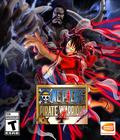
Genre: Rhythm / Dancing
Publisher: Konami
Developer: Konami
Release Date: TBA
When's the last time you got to read about a preview for an upcoming arcade game? Somehow, despite the creeping death of the American arcade scene, Konami's DDR series manages to keep gamers coming back for more. It's enough for Konami to justify release the new arcade iteration, the first in three years overall and in six years for the American market. Like most new DDR arcade versions, Dance Dance Revolution SuperNOVA features new songs, new mixes of old favorites, new step variations, and new modes of play. SuperNOVA also changes up the interface, bringing back some old features that haven't been seen in awhile, and alters the game's difficulty curve. SuperNOVA still feels very much like the familiar old DDR, but if you're sick of playing MAX2 or getting interested in the series, this game is exactly what you want.
In true arcade tradition, DDR SuperNOVA has nothing remotely resembling a plotline or story. It barely even has characters, in the form of the various dancers who move along to the beat with you in certain stages. These characters, a fixture of the game through 5th Mix, have returned after a long disappearance during the MAXX titles to once again try to distract you from the arrows. There's both new designs and familiar old favorites like the robots, the weird dancing baby, and Eiko. All of the models have received an overhaul courtesy of a new graphics engine that makes it possible for DDR to generate much higher-quality 3D in real-time. Some songs still have MAX-style videos instead of a dancer, and you can see the engine working here in all its glory. The poly-count on the dancers is now roughly double or perhaps even triple what it once was in the old games, which is quite a treat for returning players. Of course, that won't be enough to impress a player who's a real graphics whore at heart, but DDR has never been much about the graphics.
At heart, DDR is about the music, and SuperNOVA delivers on that like never before. The game features over 300 songs in all, including several new selections from favorite Konami composers like dj TAKA and Naoki Maeda. The new songs emphasize the trance electronica and J-Pop aspects of the DDR library, with a new Riyu Kosaka idol song and several tracks with names like "Terra" and "xotic" joining the roster. Along with the new songs are a hot of returnees from DDR mixes as old as 3rd and as new as MAX2. This includes dozens of classic songs that have never before appeared in an American DDR mix, including several versions of Dive, the radio edit of Riyu Kosaka's True..., and a host of Naoki Maeda's vocal tracks. Basically, all the songs that never appeared in the home mixes of DDR because of music rights finally make their American debut in SuperNOVA. There's also old classics that no DDR game is complete without, including several Paranoia mixes, AM3P in original and remix form, and even the goofy old Christmas song Silent Hill. It's as much a feast for the classic DDR fan as MAX2, and will be the first American release of many of the classic songs.
SuperNOVA is intended to as an introduction, or re-introduction, to DDR, so the steep difficulty curve that developed in the MAX games has eased back to something a bit more along the lines of 4th mix. Most songs aren't in the least bit difficult until you approach the Heavy difficulty level, and on top of that a Beginner level is available to let even the clumsiest player get a feel for the game. There's even a Tutorial mode, which is probably some kind of first in arcade play. Some super-difficult levels are still present if you play the Challenge mode steps, and of course, you can layer difficulty-boosting modifiers on to songs to make them harder. In Challenge mode the 10-step difficulty also allows for some truly blazing, painful play comparable to the suffering you could put yourself through with the infamous Legend of MAX. On the whole, though, this is a mix about getting people to play DDR for the first time, and most of the step variations will tend to be too easy for advanced players to sink their teeth into. If Konami sticks to their old tricks, then it'll be any sequels to SuperNOVA that start elevating the difficulty level again.
The arcade cabinet is a little bit different than that of past DDR versions, although similar enough that most arcades will probably just put the new songs into their old cabinets. The touchpad areas are a bit stiffer, and require more pressure to activate. This has serious consequences at higher levels of play, as it makes it harder to get Perfect rankings on freeze arrows and seems to pose a grave danger to the viability of "ninja stance" play. Whether or not you're playing on a new SuperNOVA cabinet or on a retrofitted cabinet from an older title could make a significant difference in how well current arcade players handle the new game when it comes out.
Only one truly new feature enters the arcades with SuperNOVA: a new two-player game mode called Battle, where a strong performance will cause realtime alterations to your opponent's arrows. Scoring a huge combo will make them harder, while a wimpy performance will make your opponent's arrows easier. This sounds fairly similar to the head-to-head competition mode that appeared in the Disney Mix on the PlayStation, but has never seen again sense. If it's half as fun as its Disney Mix counterpart, then it'll be a whole new way you can humiliate yourself or a good friend in public.
DDR SuperNOVA is, arguably, a title that's just more of the same when you get right down to it. It's the same arrows, and you'll be hitting the panels to clear stages in the just the same way. The new music mix, new difficulty, and new cabinet make the game feel surprisingly fresh when you step up to the metal pad to go a few rounds. DDR, like most simple games, seems to shine best when presented in its most simple form. Right now DDR SuperNOVA is on track for an American release in Spring, with Japanese and European versions to follow later in 2006.























